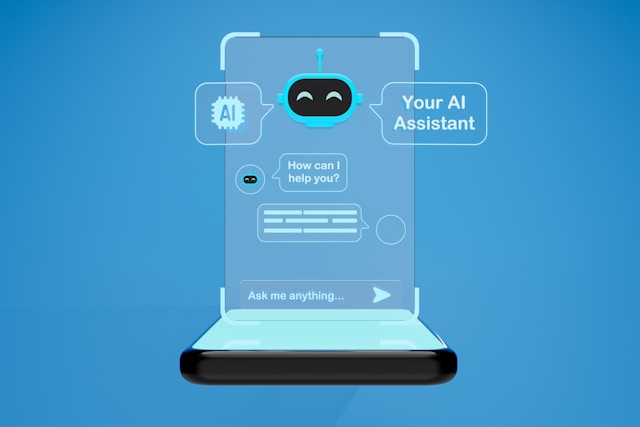A 2025 Compliance Guide with WCAG Standards
June 28, 2025 is approaching fast, and with it, a new legal milestone: the European Accessibility Act (EAA). This directive mandates that businesses operating in the EU or selling digital products and services to EU customers ensure their websites, mobile apps, and content are accessible to everyone, including people with disabilities.
If your business hasn’t yet started aligning with web accessibility standards, now is the time.
What Is the European Accessibility Act (Directive 2019/882)?
The EAA is a legislative framework aiming to remove barriers to access across the EU. It requires companies with:
• More than 10 employees, and
• Over €2 million in annual turnover
to comply with website content accessibility guidelines, making their digital services usable by all, including people who rely on assistive technologies.
This applies to:
• Websites and mobile apps
• E-commerce platforms
• Online banking and fintech services
• Transport and booking portals
• Streaming and media platforms
• Telecom websites
• Digital publishing (eBooks, online PDFs)
What Does Compliance Actually Mean?
Complying with the EAA means adhering to WCAG (Web Content Accessibility Guidelines) developed by the W3C (World Wide Web Consortium). These guidelines define how to make web content more perceivable, operable, understandable, and robust also known as the POUR principles.
You must meet:
• ✅ WCAG 2.0 Level AA
• ✅ WCAG 2.1 AA standards
These WCAG 2.1 accessibility standards are considered the legal benchmark for accessibility compliance in the EU.
Key Requirements Include:
• Adding alt text to images
• Clear heading structures (H1, H2, H3…)
• Sufficient color contrast (minimum 4.5:1)
• Full keyboard navigation support
• Captions and transcripts for multimedia
• Compatibility with screen readers
• Avoiding flashing or seizure-inducing content
💡 Bonus tip: Stick to WCAG 2.1 AA guidelines rather than just WCAG 2.0 AA. WCAG 2.1 introduces better support for mobile devices and cognitive disabilities.
Accessibility Tools & Evaluation Software
Not sure how to check your site? Use these trusted web accessibility tools and WCAG checkers:
• 🛠️ WAVE Web Accessibility Evaluation Tool
• 🛠️ Siteimprove Accessibility Checker
• 🛠️ axe DevTools
• 🛠️ Accessibility Insights for Web
• 🛠️ Free website accessibility checkers (like Lighthouse or Pa11y)
These tools help you run a complete web accessibility audit, validate your site against WCAG accessibility standards, and fix any gaps.
You can also use a WCAG compliance checker or WCAG compliance software to automatically flag violations of WCAG 2.1 guidelines.
Writing and Design Accessibility Tips
Accessibility isn’t only technical it’s also about your content and design choices. Here are quick wins:
📝 Fonts
• Use at least 14pt for digital content.
• 18pt or larger for large-print options.
🧭 Headings
• Only one H1 per page.
• Use nested headings (H2 → H3) for structure.
🎨 Color & Contrast
• Do not use color alone to convey meaning.
• Stick to a contrast ratio of at least 4.5:1 (check using WebAIM’s tool).
🔊 Multimedia
• Provide captions and transcripts for videos.
• Allow users to pause or stop animations.
📄 Documents
• Avoid PDF use unless strictly necessary.
• Default to HTML or Word formats with accessibility checkers.
The Risks of Non-Compliance
Failure to meet WCAG compliance and EAA regulations may lead to:
• ❌ Fines of up to €100,000 or more
• ❌ Public lawsuits
• ❌ Loss of public contracts
• ❌ Severe brand and reputation damage
Some estimates show that severe cases could incur fines of up to €1,000,000.
Why Accessibility Benefits Everyone
Creating accessible digital experiences is not just about compliance it’s about inclusion. According to the EU, 1 in 4 Europeans lives with a disability. Accessibility features like keyboard navigation, alt text, and plain language help:
• Elderly users
• People with temporary impairments (e.g., a broken arm)
• Users in noisy or low-bandwidth environments
Plus, accessible websites load faster, rank higher in SEO, and convert better making it a win-win for usability and profitability.
How to Get Started
Here’s a 6-step action plan to prepare:
1. Run a web accessibility checker using tools like WAVE or Siteimprove
2. Fix critical issues: navigation, alt text, contrast, and semantic HTML
3. Train your team: everyone from content writers to developers
4. Follow WCAG 2.1 AA guidelines in all future updates
5. Test manually: Use screen readers, keyboard navigation, and real user feedback
6. Document your progress and update your accessibility statement
⏳ Start early. Accessibility remediation takes time and effort waiting until the deadline will cost more in resources and reputation.
Masu Can Help
At Masu Business Software, we simplify accessibility. Whether you’re starting fresh or retrofitting an existing site, we provide:
• Full WCAG 2.1 compliance audits
• Tailored accessibility fixes
• User testing with assistive technologies
• Documentation for legal proof
🛡️ Avoid lawsuits, protect your brand, and welcome every user.
👉 Start your accessibility journey today
Final Words
Website accessibility is no longer optional. With the European Accessibility Act coming into force by mid-2025, you have the opportunity and the responsibility to create a more inclusive digital world.
Complying with WCAG accessibility guidelines is the first step. The next? Making accessibility part of your business culture.
Start now. Be ready. Be inclusive.








